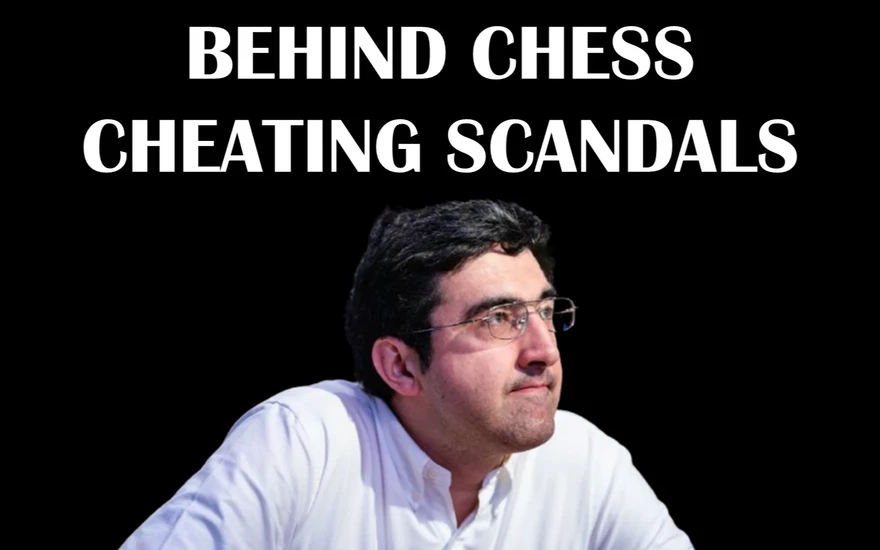
https://www.chess.com/es/article/view/kramnik-y-kasparov-el-fin-de-una-era
The Cultural Misunderstanding Behind Cheating Accusations
Behind Chess Cheating ScandalsAccusations of cheating have become a virus within the chess community, spreading rapidly and diminishing the enjoyment of competition. They generally damage the reputation of both accusers and accused, as well as confidence in the ‘safety’ of the sport, while they discourage spectators and sponsors, reducing the overall appeal of chess as an activity to follow and support.
Repeated accusations of cheating in chess, particularly by Russian players (with the Kramnik case as the most notorious example), are a controversial phenomenon, often leading directly to an assessment of the accusers’ personality. When accusations repeatedly come from the same person, the conversation partially focuses on attributing their actions to personal flaws or biases rather than examining the broader cultural and historical context from which they come. Bridging the cultural gap between different chess communities could help de-escalate conflicts, reduce the emotional intensity of these discussions, and facilitate more constructive dialogue to achieve shared criteria. To that end, it is necessary to understand the causes behind these accusations from Russian players:
-
The prevalence of Russian players. Russia is one of the countries with the highest number of chess players, represented, for example, by its number of federated players. This means that Russian players have a higher probability of being involved in any chess-related phenomenon, including accusations of cheating. With more Russian players active in tournaments and online platforms, the probability of encountering such accusations coming from this group is higher.
-
Methodological differences. A more subtle factor lies in the division of academic thought during the Cold War era. During this period, there had been notable developments in probabilistic and inferential statistical models in the North Atlantic countries. In contrast, the Soviet Union developed its own distinctive approaches in the field of physics and mathematics, emphasizing deterministic systems and formal proofs. Although mathematical rigor is undeniable in the Soviet tradition, this divergence in approach may have contributed to differences in how cheating in chess is detected. Without a shared basis in methodology, there may be a greater tendency for differences in the interpretation of statistical anomalies as evidence of cheating.
-
The cultural gap. Adding to these methodological differences is the relative cultural gap between the Russian community and other chess communities. Language barriers can create echo chambers where ideas circulate and get strengthened without much external feedback. Within predominantly Russian-speaking forums, narratives about cheating can become stronger and reinforce suspicion. This gap also limits exposure to broader discussions in English-speaking communities, where statistical nuance or alternative explanations for performances considered out of the ordinary are debated with different methodologies.
-
National pride. Chess holds a special place in Russian culture, often seen as a symbol of national pride and intellectual dominance. When an outsider stands out, particularly one outside traditional training systems, it can challenge long-held expectations. This could lead to natural skepticism.
-
The context of online platforms. In the realm of online chess, where cheating is a genuine concern, accusations are more likely to emerge and propagate.
Bridging the cultural gap
The key to addressing this issue lies in fostering greater intercultural dialogue within the chess community. Open discussions across linguistic and methodological divides can help reduce misunderstandings and build trust. At the same time, there is a limitation to how much can be disclosed, because revealing too much about cheat detection methodologies could inadvertently equip cheaters with the tools to bypass these systems, reducing their effectiveness over time. Rather than providing transparency in cheating detection mechanisms, maybe the focus should be on explaining and disproving flawed methods that do not constitute valid evidence of cheating. Establishing clear boundaries on what cannot reasonably be sufficiently used as evidence helps prevent misinterpretations and promotes fairness. Crucially, this communication must be guided by a shared international agreemenr, with leadership from influential organizations in the chess world, such as the international federation (FIDE) and major platforms like Lichess and Chess.com.
While it is tempting to view the prevalence of cheating accusations from some Russian players as a quirk of their personality, the reality is far more complex. The Cold War division, methodological differences, and language barriers all play a role in how conflicts around cheating accusations are generated. By recognizing these factors, the chess community can work toward a more inclusive and understanding environment.



